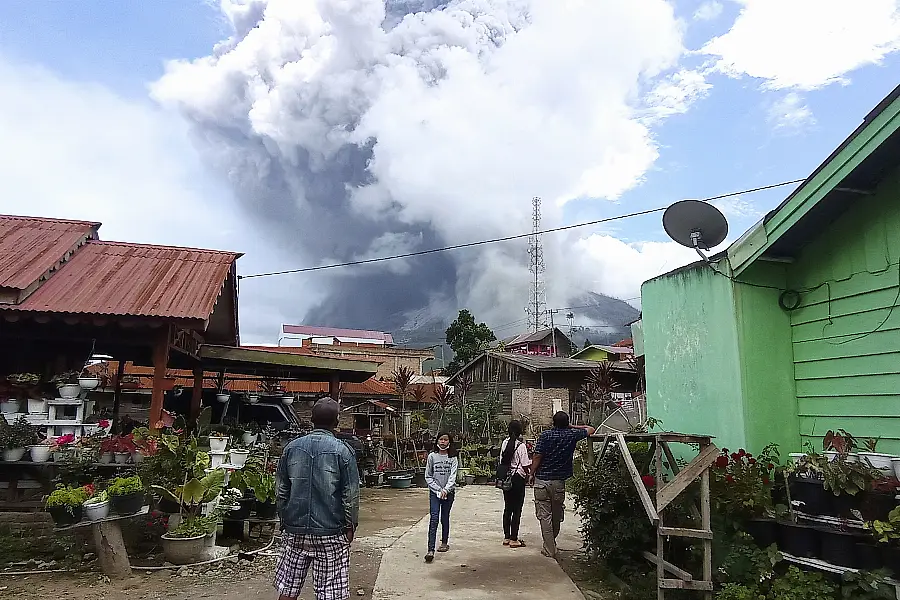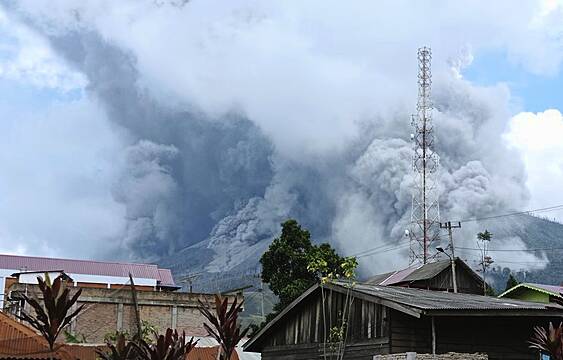A rumbling volcano on the Indonesian island of Sumatra shot billowing columns of ash and hot clouds down its slopes on Wednesday.
The ash released by Mount Sinabung in North Sumatra province reached more than 4,500 metres (14,760 feet) into the atmosphere, and an avalanche of searing gas clouds blew one kilometre (0.62 miles) to the east and southeast, Indonesia’s Volcanology and Geological Hazard Mitigation Centre said.
Armen Putra, an official at the Sinabung monitoring post, said there had been no casualties from the afternoon eruption and an alert had been maintained at the second-highest level.
The 2,600-metre (8,530-foot) mountain has been rumbling since last year and villagers were advised to stay five kilometres (3.1 miles) from the crater’s mouth.

They have been warned about lava while authorities were closely monitoring sensors that picked up increasing activity in recent weeks.
The last such eruption was in early May, when ash fell on nearby villages.
The volcano, one of two currently erupting in Indonesia, was dormant for four centuries before exploding in 2010, killing two people.
Another eruption in 2014 killed 17 people, while seven died in a 2016 eruption. It has sporadically come to life since then.
About 30,000 people have been forced to leave their homes around Sinabung in the past few years.
Sinabung is among more than 120 active volcanoes in Indonesia, which is prone to seismic upheaval due to its location on the Pacific Ring Of Fire, an arc of volcanoes and fault lines encircling the Pacific Basin.







